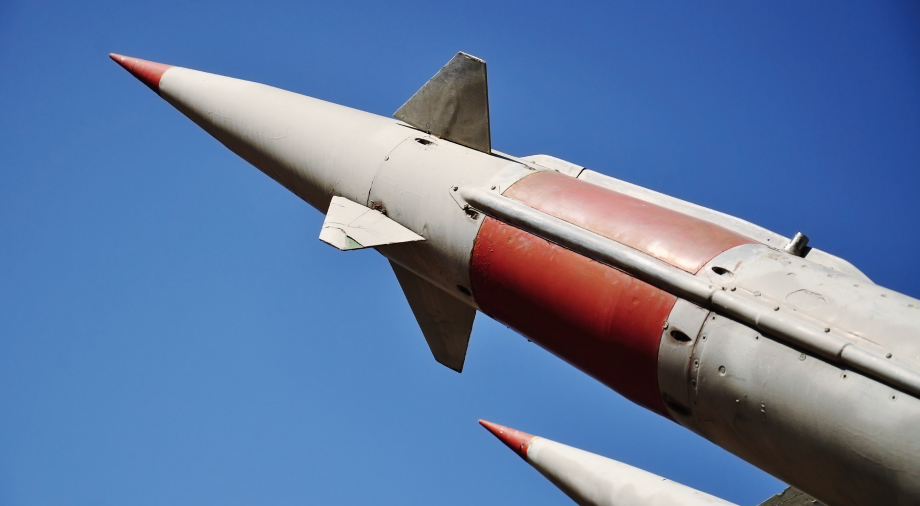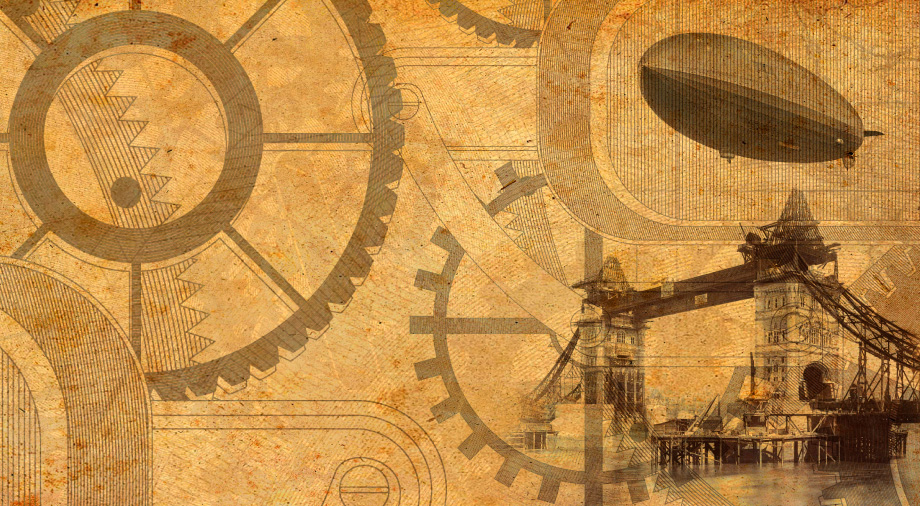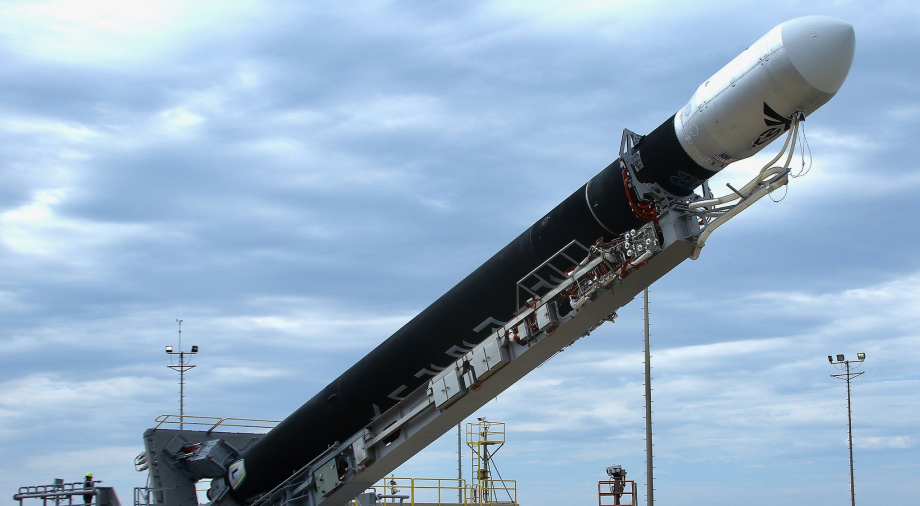Modern warfare is hard to imagine without rocket weapons. They form the basis of strategic nuclear deterrence forces and are used in high-precision multiple launch rocket systems (MLRS), anti-ship, and anti-aircraft missile systems. The destructive power of warheads, speed, and high accuracy have turned ballistic missiles into a main weapon of our age. But before completely changing the face of modern warfare, the rocket weapons went through almost 800 years of development.
The prototypes of the first rockets
One of the first mentions of rocket weapons goes back to 13th Century China. During the siege of the city Kai-feng-fu, the capital of the province of Henan, by Mongolian forces, the defenders used a weapon they called “Fei Huo Jiang” (translated: flying fire spears).
The weapon was used to set fire to food tents and wicker fortifications. It should be clarified that in the Song Dynasty chronicles, there is no exact description of how these missiles worked, so some historians are inclined to believe that Fei Huo Jiang could simply have been normal spears with lit tips propelled not by jet thrust, but by ordinary mechanical throwing machines. They even could have been thrown by hand, as was done with “fire spears” (huǒ qiāng), which are considered the forerunners of modern guns and shotguns.
The discovery of gunpowder by Taoist monks prompted the inventors of the time to create the first jet propulsion devices, although they were used not for combat, but for entertainment purposes. A description of gunpowder bamboo tubes used to launch fireworks can be found in the text “Qin Ye-yu” (“Village Tales in Eastern Qi”), first published by Zhou Mi in 1264. A hollow bamboo stick was plugged on the one side, and then gunpowder and a wick were put through on the other side. When the fire on the wick reached the powder chamber, the gasses from the ignited powder rushed out the unplugged hole, forcing the tube to rotate. The process was accompanied by flying sparks, and the fireworks themselves were called “ground rats.”
A little later, rockets were put to military use. Described in the treatise “Fire Dragon Manual” (Huo Lung Ching), the device, which was called a “bee’s nest” (Yi Wo Feng) after its hexagonal shape, was a quiver with arrows. Just below the arrowhead, a cylinder filled with gunpowder was attached, as well as a wick leading to the powder chamber. The ignition of the fuse caused the the launch of arrows, which, propelled by a jet of hot gasses,, flew out of the quiver and set fire to enemy fortifications.
The very first two-stage ballistic missile was the Huo Long Chu Shui (translation: fire dragon emerging from the water), which appeared in service with the Chinese fleet of the Ming Dynasty in the 14th century. Similar to early types of rocket fireworks, the Huo Long Chu Shui was a hollow bamboo tube about 5 feet (1.5 m) long, with a carved open-mouthed dragon head mounted on the front. The Huo Lung Chu was equipped with four rocket arrows that were mounted on the sides of its outer casing, as well as smaller arrows with powder cylinders hidden in the base of the dragon’s bamboo body.
Simultaneous ignition of the fuse of the four outer rockets launched a bamboo dragon rocket (the first stage of the rocket) from the ship’s deck, and ignited the fuse leading to smaller rockets stored in the base of the bamboo tube (the second stage). When the bamboo dragon reached the target, it fired a portion of small missiles from its mouth. At its core, the Huo Long Chu Shui was the first ancient analogue of modern cluster munitions.
Ancient Chinese texts state that the range of the Huo Long Chu Shui was 2 to 3 li (1000-1500 m), but also that was not really an aimable weapon. This is confirmed by the streamlined body of the rocket, which would have had rather mediocre aerodynamic properties. Among other things, the jet thrust vector was carried out along a tangent line to the fuselage of the rocket, which also indicates a low degree of accuracy. An episode of Mythbusters, in which a miniature replica of the Huo Long Chu Shui was recreated and tested, demonstrated these assumptions. After launch, the rocket could fly anywhere, and even friendly forces were not safe from its destructive effects.
Mention of three different types of rockets – floating, free, and unguided flight – can be found in medieval European texts, such as the Bellifortis from 1405 by Konrad Kjeser. Presumably, knowledge of this technology could have reached the borders of Europe alongside with the waves of Mongol invasions which had taken place a century earlier. One way or another, the low accuracy and inability to control the flight of the first rockets completely nullified the prospects for their use by the 15th century. Missile weapons were forgotten for three centuries, until the late 18th and early 19th centuries, when new, modified types of missiles reappeared in various theaters of operations.
Metal and new ballistics
The development of rocket science at the end of the 18th century was primarily due to the design of new rocket bodies, which began to be made from metal. An iron body made it possible to provide the rocket with greater stability and protect its fuselage from deformation and destruction during high-speed flight. In addition, new knowledge about aerodynamics made it possible to design rockets with a far more effective jet thrust vector. A significant role in this was played by Isaac Newton, who deduced the three most important laws of classical mechanics, which proved very applicable to the basic principles of rocket motion. It became clear to rocket scientists that for greater thrust and stabilization of a rocket’s flight path, rockets needed to have longitudinal spin, and the rocket body itself needed to be made stronger and more streamlined.
The first to take the initiative to enclose a rocket in a metal case was the English mathematician Robert Anderson. In his 1696 work entitled The Making of Rockets, he considered methods for manufacturing low-power and super-heavy rockets, the body of which would be placed in a metal cylinder like a gun barrel.
Forty years before the work of Robert Anderson, the basics of creating rocket weapons were described in his book by a nobleman and subject of the Grand Duchy of Lithuania, Kazimir Semenovich. In his book The Great Art of Artillery: Part One (Artis Magnae Artilleriae pars prima), published in 1650, the first images of rocket stabilizer fletching can be found. It was made in the form of a two- and three-sided stabilizer and was located on the outer part of the rocket body in the area of its nozzle. The device made it possible to stabilize the trajectory of the rocket during its flight. Despite the rethinking of aerodynamic properties and the introduction of flight stabilizers, Semenovich (unlike Robert Anderson) could not see the key point: in order for a fast-flying rocket not to collapse in flight, its body must be made of metal.
However, even with the knowledge that Robert Anderson brought to rocket science, almost 100 years passed between the first thoughts about metal rockets to their actual deployment.
The first use of metal-encased rockets in combat is dated in 1792. The Indian kingdom of Mysore successfully used rockets to repel the military intervention of the British East India Company during the protracted and bloody Anglo-Mysore Wars, which lasted 32 years. The use of a metal case and soft iron tubes to contain solid fuel (a powder charge) allowed the Mysore rockets to produce more powerful jet thrust and increase their flight range, reaching up to 2 km.
The powder cylinders that served as the fuel chambers for the Mysore rockets were sometimes perforated so that they would explode upon impact with the ground, thus acting as incendiary munitions. Some types of rockets were equipped with a closed powder cylinder, but the rocket body itself was equipped with sharp blades: in this variation, the rocket turned into a kind of deadly harpoon that ricocheted off the ground and literally cut through British formations, inflicting terrible lacerations on the soldiers.
Indian missiles were deadly weapons, but they failed to change the course of the war. Tipu Sultan was killed in an assault on Seringapatam on May 2, 1799. And after the capture of his fortress, a significant arsenal of Indian rockets fell into the hands of the British, which included 600 rocket launchers, 700 primed rockets, and another 9,000 rocket not yet loaded with powder.
The British military learned and adopted what had given them so much trouble during the Indian campaign. Five years later, in 1804, modified metal rockets designed by the British inventor Sir William Congreve were first deployed by a European military, first in the Napoleonic Wars, and then against the Americans in the War of 1812.
Rocket attacks by the British are even mentioned the American anthem by Francis Scott Key, where the following lines mention rocket attacks upon the American Fort McHenry in Baltimore from the deck of the Royal Navy warship HMS Erebus:
And the rocket’s red glare
The bombs bursting in air
Gave proof through the night
That our flag was still there
It is important to understand that the world’s first metal-bodied rockets, which entered service in the 19th century, still had low accuracy, and their main destructive potential was achieved only when used in massive barrages.
However, the experiments of Englishman William Hale in 1844 changed this. He developed technology to stabilize rocket rotation, which consisted of installing small inclined blades near the exhaust nozzle. Reactive gasses exiting through the fuel tube from the rocket nozzle hit the stabilizers, which gave the rocket a longitudinal rotational motion, stabilizing it in the same way that the grooves in a rifle stabilize the trajectory of a bullet by causing it to spin.
The structure of the William Hale (left) and inclined stabilizers used in the first ballistic missile – V-2 (right)
The next century filled the military arsenals of Europe with new types of barreled artillery with a rifled barrel, the accuracy and range of which far surpassed even the most advanced rockets. To compete with new types of artillery, rockets needed not only to improve their flight stability, but also to significantly increase their speed. First and foremost, this required new types of rocket fuel.
The second part of this series will tell you how the first liquid-propellant rockets appeared. It was these which would become the forerunners of the first supersonic ballistic missiles, which would initiate the modern era of missile weapons.





